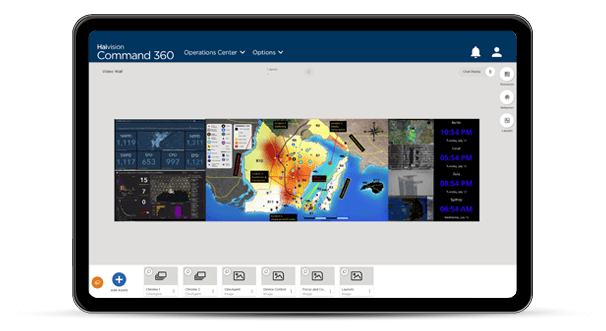Cost is arguably a significant, if not primary, consideration for organizations seeking to install a scalable, secure, and dynamic visualization collaboration platform. The visualization system design must incorporate a broad range of technical and logistical requirements to be successful. While the ‘bottom line’ can’t be ignored, it’s worth noting how the return-on-investment decreases when price alone determines selection.
Designing a video wall is much more involved than hanging displays and connecting hardware. To be fair, most people realize video walls require more than plug-and-play planning and operation. Even so, many underestimate the number of required considerations to achieve truly optimal performance.
What’s at Stake
What qualifies as ‘optimal performance?’ It’s not just the right hardware and software, although both comprise the foundation of a system. Proper visualization system design leverages the surrounding physical space to maximize workflow, visibility, audio quality, and more.
Mission-critical federal and state agencies such as EOCs, SOCs, JOCs, and RTCCs require highly secure, redundant, scalable, and visual collaboration. Academic and research organizations rely on dynamic, ultra-high-resolution, immersive displays and the ability to render 3D models, while processing vast quantities of data. Ultimately, everyone wants a system built with all these features in a space that can accommodate numerous users, like 24/7 incident response centers. Consuming information in these fast-paced environments needs to be effortless, not cumbersome.
Unfortunately, it’s easier to quantify time and money lost when a system is down than it is to know the true benefits of one designed for optimal performance. How do you measure the value of countless actions taken based on the consistent and immediate availability of critical intelligence?
How to Grade Your Provider
When evaluating visualization system providers, consider their attention to detail during the requirements analysis phase. Are they simply selling you a video wall, or are they collaborating with you? Can they provide a platform optimized for your operational workflows? Have they properly evaluated your processing and content control requirements? Is the proposed system a good fit for your physical space? Did they successfully identify your needs in order to design a holistic solution?
The minimal requirements analysis should include:
- Purpose: Clear definition of system scope and purpose
- Physical space: All room dimensions, locations of closest and furthest viewers, possible obstructions, and lighting conditions
- Sources and content: Types of content to be displayed and attributes of content such as audio requirements, control methods, classification, and admin needs
- Devices: Locations and connection types
- System control: Total number of users, their locations, access, and permissions
- Security: All network and security needs
- Communications: Platforms used
- Cabling distances and management: Rack installation space, ceiling and floor construction
- Power: Sources and redundant power
With this information your design team can recommend:
- Video wall display shape, size, and resolution
- Processing power
- Scalability needs
- Site management tools
- Content control interface
This is the starting point. Within each of the items listed above are subsets of requirements unique to each organization’s human and technological needs. A good video wall design team will provide thorough recommendations and work with you to deliver an optimal, custom visual collaboration system. This level of detail ensures long term value for your investment.
